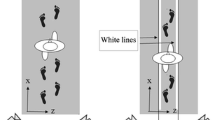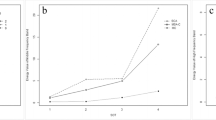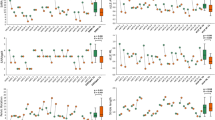Abstract.
Objective attempts to characterize postural control in subjects with cerebellar (Cb) pathology have focused primarily on sagittal plane responses to static standing, semi-dynamic standing, and platform perturbation. Repeated, dynamic, functional movement may provide a better opportunity to study the effects of ataxia on frontal plane postural stability. The purpose of this investigation was to quantify lateral stability using center of gravity (CG) and center of pressure (CP) movement analysis, and to examine motor responses necessary to complete a repetitive stepping task. Whole body kinematic and kinetic data were collected as patients with Cb degeneration and non-disabled volunteers repeatedly ascended forward and descended backward from a 7.6-cm step to the beat of a metronome. Cb subjects demonstrated significantly greater lateral CG instability, consistent with increased CG velocity and displacement variability in the frontal plane compared to non-disabled subjects. Significantly greater lateral CP displacement was found in subjects with Cb degeneration. Phase plot patterns from patients with Cb degeneration showed poor movement quality, indicated by abruptly changing CG phase plot patterns and abnormal CG acceleration and deceleration phases. Ataxic postural reactions were observed consistently during lateral weight shifting phases toward the stance limb. We hypothesized that lateral postural instability in Cb subjects stems from altered lower extremity intersegmental coordination and inadequate lateral CG velocity control. Frontal plane CG instability may necessitate a wide-based gait. Despite the varied neuroanatomic sites of degenerative Cb pathology, subjects with Cb pathology demonstrated similar CG movement patterns and altered motor strategies to avoid destabilization. Dynamic assessment provides important information regarding frontal plane instability not revealed by static assessment methods. These findings suggest that a dynamic, constrained stepping task effectively differentiates Cb and non-disabled volunteers, contributing to our knowledge of the effect of ataxic movement disturbances on frontal plane postural stability and lower limb coordination.
Similar content being viewed by others
Author information
Authors and Affiliations
Additional information
Electronic Publication
Rights and permissions
About this article
Cite this article
Hudson, C., Krebs, D. Frontal plane dynamic stability and coordination in subjects with cerebellar degeneration. Exp Brain Res 132, 103–113 (2000). https://doi.org/10.1007/s002219900291
Received:
Accepted:
Issue Date:
DOI: https://doi.org/10.1007/s002219900291




